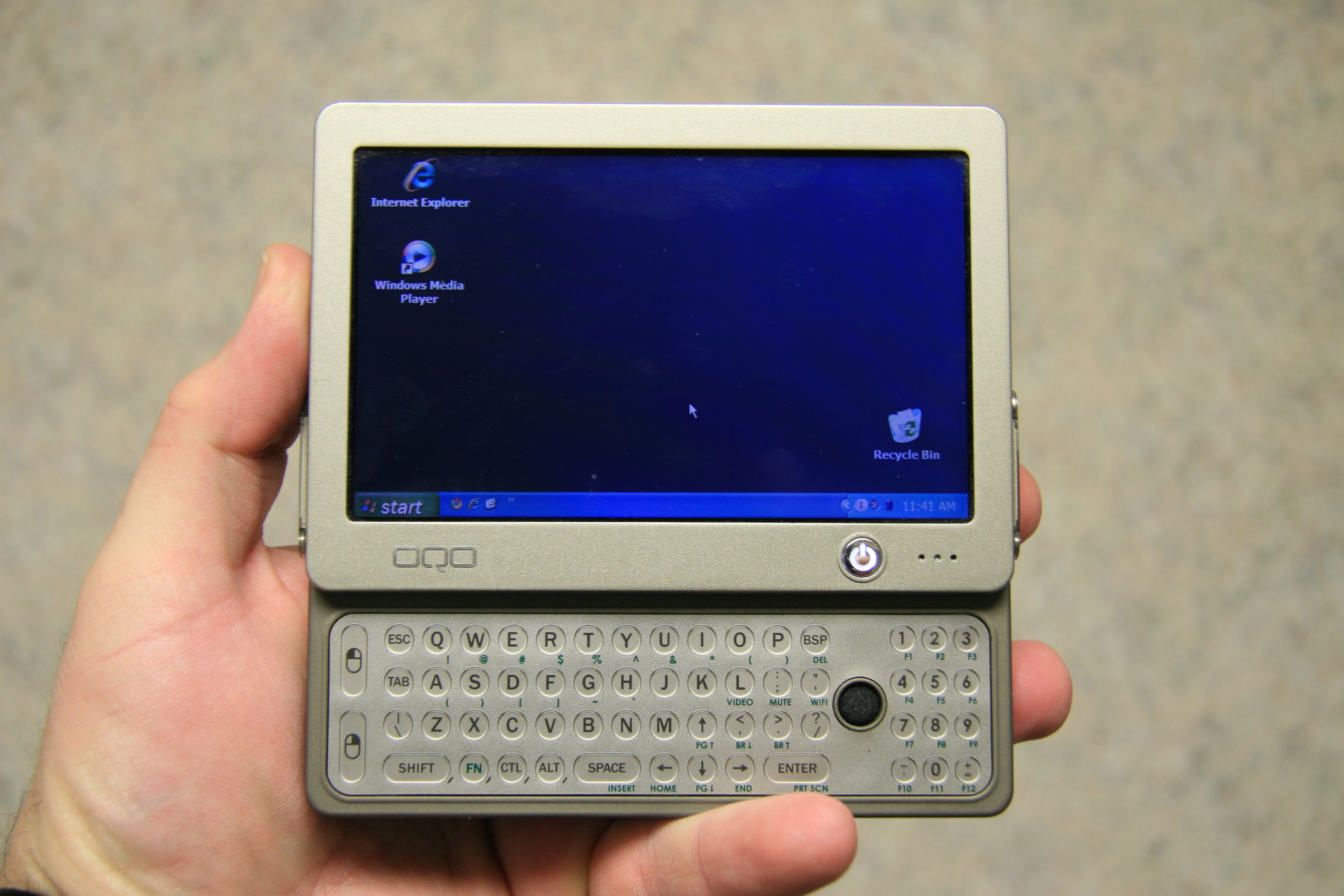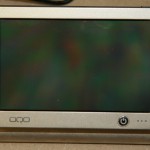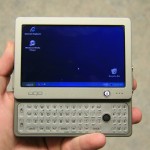Remember when ultra-mobile personal computing (UMPC) was all the rage? I do, but it’s been a while. That was back in the day when you had machines like the HTC Shift or the OQO Microcomputer (Models 1-3).
You could argue that smartphones have become the new UMPC platform, or even perhaps the host of new iOS and Android tablets, but they’re really not the same thing. The UMPC movement involved computers that were designed, in concept at least, to give you the desktop experience on a machine that you could fit in your pocket. This included using an operating system similar to the desktop as well as a physical keyboard and the ability to dock the device and use peripherals like a mouse.
A perfect example of a UMPC device was the OQO Microcomputer. The OQO was a 5-inch computer with physical keyboard that ran Microsoft Windows. I wanted one so bad I could taste it. Unfortunately the OQO was a $2000 luxury that I simply couldn’t justify at the time. I did however get my hands on one for about a week. The experience was cool, but it definitely left me feeling like the device would be difficult to use as a true desktop replacement.
The idea of UMPC’s was great, but ultimately was ahead of its time and limited by the technology of the day. The technology needed to shrink a desktop computer to something as small as a Galaxy Nexus 7 tablet wasn’t available 5 years ago. Fast forward to today and the story has changed. With advances in screen technology, batteries, processors, solid state memory and manufacturing processes I believe you could potentially succeed today where UMPC devices failed in the past.
Think about it. As a society we’re becoming more tech savvy than ever. We’ve embraced technology such as smartphones and small, portable tablets to the point where I find it odd when I meet someone that doesn’t have one. In addition, people are constantly searching for, and developing new ways to remain productive while away from their computers. Laptops filled the niche for a long time, but I believe most casual laptop users are migrating away from their laptops in an ever increasing desire to de-bulk; I know I am.
There must be others out there like me as the popularity of consumer tablets continues to grow at an exponential pace. However, and I’ve said this many times, consumer tablets are not a true replacement for a laptop computer. They work great for email, social media, reading documents, surfing the web, etc, but fall short where more is needed. Not to say that UMPCs are the answer as I found the OQO difficult to use secondary to the small screen and tiny keyboard, but the power was there.
The bottom line is that it’s time to revisit the UMPC concept. Microsoft has given us a glimpse of what’s possible with the new Surface Tablet. All we need now is for someone to shrink it.
Images below of the actual OQO that I used.




Leave a Reply